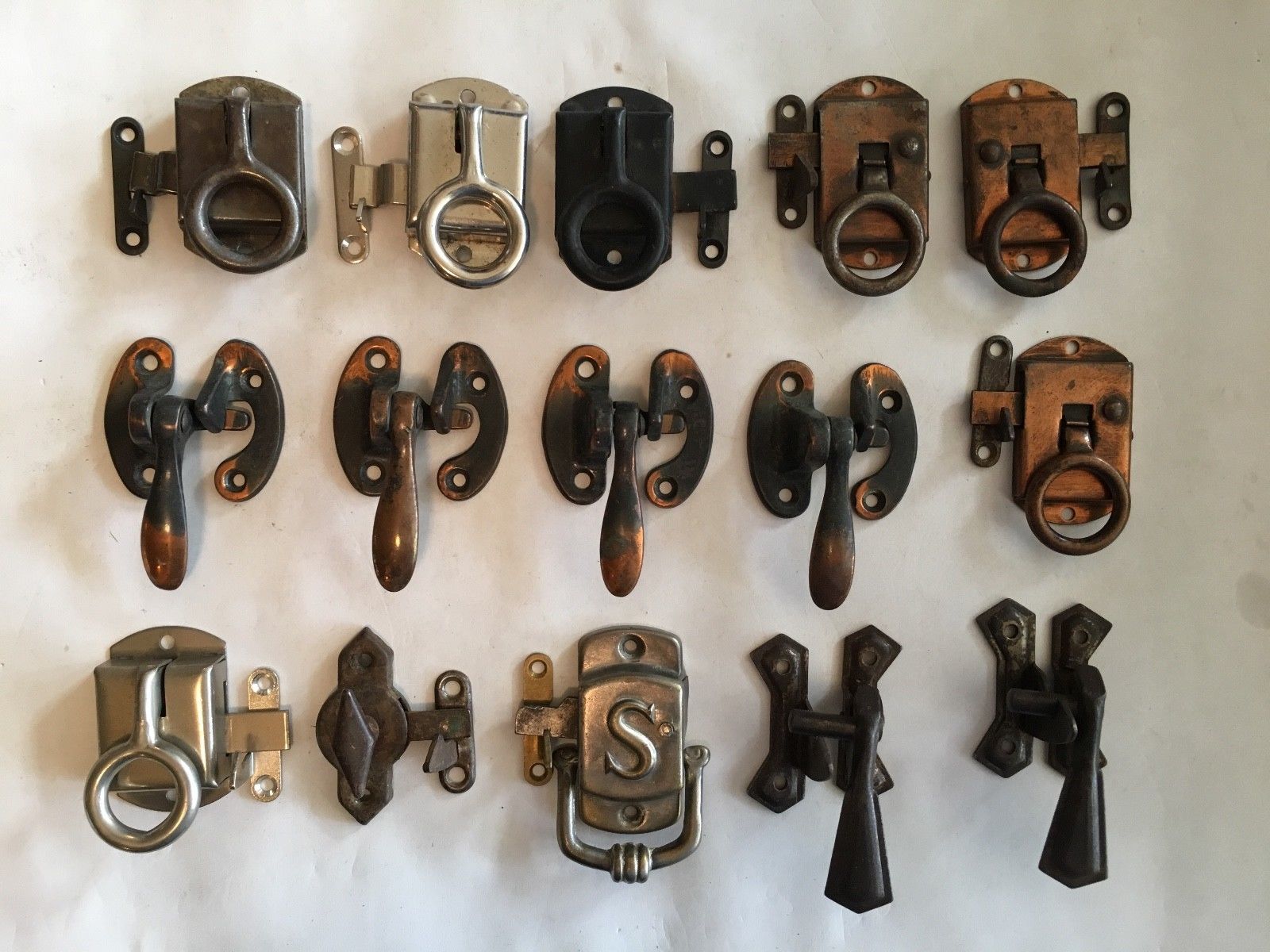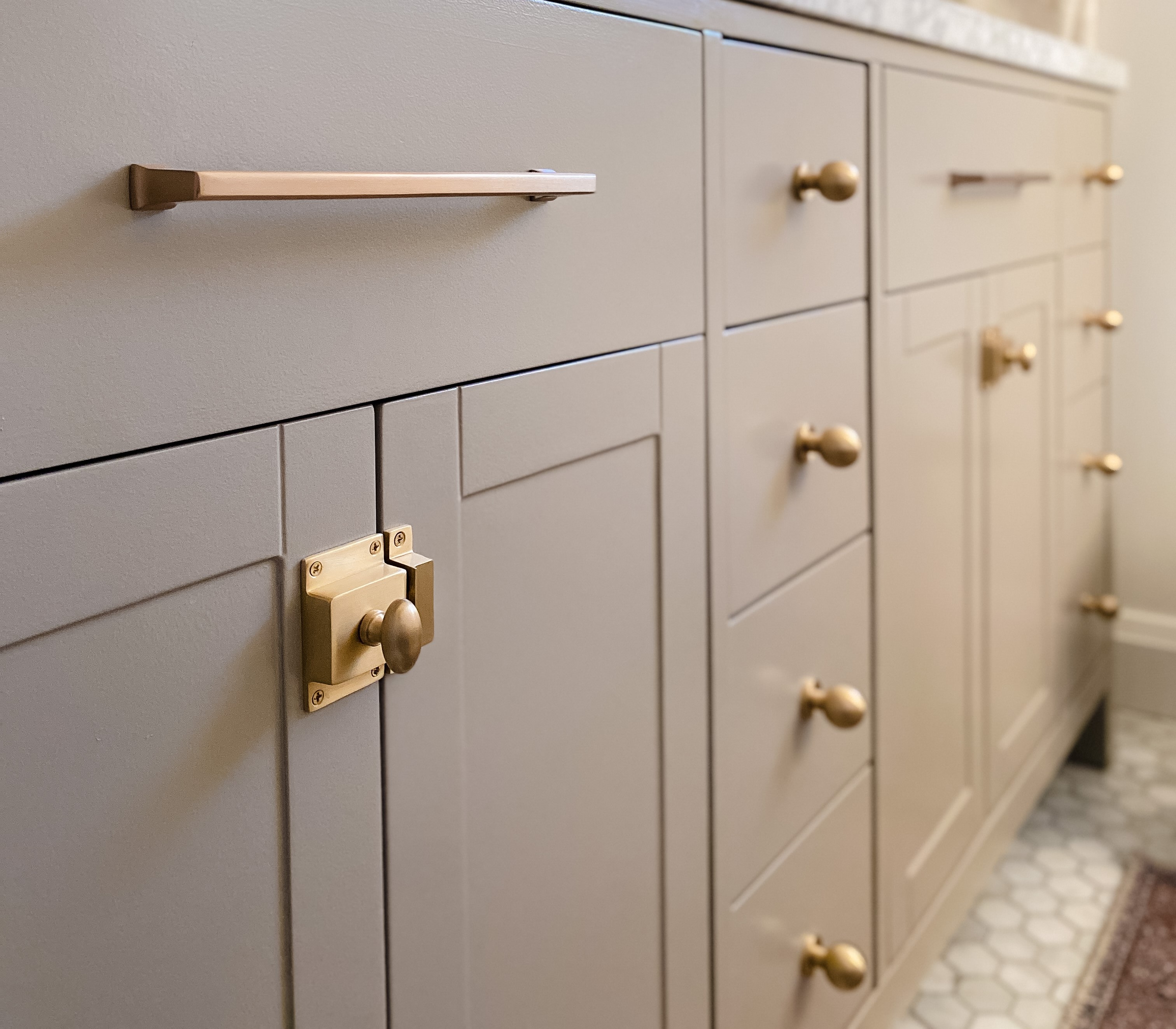History and Evolution of Antique Kitchen Cabinet Latches

Antique kitchen cabinet latches, those unassuming yet vital components that secure our culinary treasures, have a rich history intertwined with the evolution of kitchen design and craftsmanship. From humble beginnings to intricate works of art, these latches reflect changing tastes, technological advancements, and the enduring need for practicality and style in the heart of the home.
Materials Used in Antique Kitchen Cabinet Latches
The materials used in antique kitchen cabinet latches offer a fascinating glimpse into the craftsmanship and technological advancements of their time. From robust iron to gleaming brass, each material possesses unique characteristics that influenced both the design and function of these essential hardware pieces.
- Iron: Iron, a durable and readily available material, was often employed in early latches. The strength of iron made it ideal for creating robust latches that could withstand the rigors of daily use. Early iron latches were often simple in design, with a focus on functionality rather than ornamentation. However, as craftsmanship evolved, iron latches became more elaborate, incorporating intricate patterns and decorative elements.
- Brass: Brass, with its warm, golden hue and malleability, became a popular choice for kitchen cabinet latches in the late 19th and early 20th centuries. The use of brass allowed for more intricate designs, including intricate engravings, embossed patterns, and polished finishes. Brass latches often added a touch of elegance and sophistication to kitchen cabinets.
- Wood: While less common than metal, wood was sometimes used in the construction of antique kitchen cabinet latches, particularly in more rustic or handcrafted cabinets. Wooden latches often featured simple, functional designs and were typically painted or stained to match the cabinet’s finish.
Types of Antique Kitchen Cabinet Latches

Antique kitchen cabinet latches represent a fascinating blend of functionality and design, offering a glimpse into the craftsmanship and aesthetics of bygone eras. These latches, often crafted from materials like brass, iron, and wood, served a crucial purpose in securing cabinets and keeping their contents safe. Their evolution over time reflects the changing needs and tastes of homeowners, resulting in a diverse array of latch types that continue to captivate collectors and enthusiasts today.
Functional Mechanisms of Antique Kitchen Cabinet Latches
Antique kitchen cabinet latches are broadly classified based on their functional mechanisms, each offering distinct advantages in terms of security, ease of use, and durability.
- Spring-Loaded Latches: These latches rely on a spring mechanism to keep the latch engaged, providing a secure hold. The spring tension can be adjusted to suit the weight of the cabinet door and ensure a tight closure. Spring-loaded latches are known for their simplicity and ease of use, making them a popular choice for kitchen cabinets.
- Magnetic Latches: These latches employ magnets to keep the cabinet door closed. Magnetic latches are particularly popular for their quiet operation, as they do not require any mechanical latching mechanism. However, they may not be as secure as other types of latches, especially in situations where strong forces could dislodge the magnetic connection.
- Latch-and-Bolt Systems: These systems combine a latch with a bolt that extends into a strike plate on the cabinet frame. The latch secures the door, while the bolt provides additional security. Latch-and-bolt systems are typically found on heavier cabinets and offer a higher level of security compared to spring-loaded or magnetic latches.
Types of Antique Kitchen Cabinet Latches Based on Design Features
The design features of antique kitchen cabinet latches offer a rich tapestry of styles and aesthetics, reflecting the craftsmanship and design sensibilities of different periods.
- Drop Latches: These latches feature a simple lever that drops into a catch on the cabinet frame. Drop latches are often found on older cabinets and are known for their rustic charm. They are typically made from brass or iron and may have intricate details, such as decorative knobs or handles.
- Hook-and-Eye Latches: These latches consist of a hook that engages with an eye on the cabinet frame. Hook-and-eye latches are often found on cabinets with a more traditional or farmhouse style. They are known for their simple yet effective design and can be made from various materials, including brass, iron, and wood.
- Button Latches: These latches feature a button that is pressed to release the latch. Button latches are typically found on cabinets with a more modern style and are known for their sleek and minimalist design. They are often made from brass or nickel and may have a polished or brushed finish.
Examples of Specific Latch Types
Specific latch types offer a fascinating glimpse into the historical context and design trends of their era.
- Victorian Cabinet Latches: Victorian cabinet latches are often characterized by ornate designs and intricate details. They are frequently made from brass and may feature floral motifs, scrollwork, or other decorative elements. These latches reflect the elaborate aesthetics of the Victorian era, which valued craftsmanship and artistic expression.
- Arts and Crafts Cabinet Latches: Arts and Crafts cabinet latches are typically simpler in design than their Victorian counterparts, emphasizing functionality and natural materials. They are often made from iron or wood and may feature geometric patterns or minimalist details. These latches reflect the Arts and Crafts movement’s emphasis on handcrafted objects and a connection to nature.
- Mid-Century Modern Cabinet Latches: Mid-century modern cabinet latches are characterized by their sleek and minimalist designs. They are often made from brass or chrome and may feature simple geometric shapes or streamlined lines. These latches reflect the clean lines and functional aesthetics of the mid-century modern movement.
Identifying and Appraising Antique Kitchen Cabinet Latches

Identifying and appraising antique kitchen cabinet latches involves a careful examination of several key factors. These factors provide valuable insights into the latch’s age, origin, maker, and overall worth.
Maker’s Marks and Identifying the Origin
Maker’s marks, often found cast into the metal or engraved on the surface, are crucial for identifying the origin and maker of an antique latch. These marks can be in the form of initials, company names, or unique symbols.
- For example, the initials “RUS” on a latch might indicate it was made by Russell & Erwin Manufacturing Company, a prominent American hardware manufacturer.
- Another example is the “S&S” mark, which stands for Sargent & Company, another well-known American hardware company.
Identifying maker’s marks requires familiarity with historical hardware manufacturers and their distinctive markings. Reference books, online databases, and antique hardware forums can be valuable resources for this purpose.
Materials Used
The materials used in an antique latch can provide clues about its age and origin. Common materials include:
- Brass: Brass latches are common and can range from simple to elaborate designs. The color of brass can vary depending on its age and patina.
- Iron: Iron latches were often used in older cabinets, particularly in the 18th and 19th centuries. Iron latches can be susceptible to rust and corrosion.
- Cast Iron: Cast iron latches were popular in the late 19th and early 20th centuries. They often feature intricate designs and can be quite heavy.
- Wrought Iron: Wrought iron latches are typically hand-forged and are highly sought after by collectors. They often exhibit unique characteristics and craftsmanship.
- Nickel: Nickel latches were introduced in the late 19th century and became popular in the early 20th century. They are known for their durability and resistance to corrosion.
Condition
The condition of an antique latch significantly impacts its value. Factors to consider include:
- Patina: A patina is a layer of oxidation that forms on metal over time. A desirable patina is often a sign of age and can enhance the aesthetic appeal of a latch. However, excessive corrosion or rust can detract from its value.
- Wear: Wear and tear are expected on antique latches, but excessive wear can diminish their value. Look for signs of damage, such as cracks, chips, or missing parts.
- Completeness: A complete latch, including all its original parts, is more valuable than a latch with missing parts. Missing parts can be difficult to find and can significantly impact the latch’s functionality.
- Functionality: A latch that still functions properly is more desirable than one that is broken or damaged. A functional latch can be used on a restored cabinet, increasing its value.
Appraising Antique Kitchen Cabinet Latches
Appraising antique kitchen cabinet latches requires expertise in identifying maker’s marks, materials, and condition.
The value of an antique latch is determined by its rarity, condition, and historical significance.
- Rarity: Latches made by lesser-known manufacturers or those with unique designs are often more valuable than common latches.
- Condition: Latches in excellent condition, with minimal wear and tear, are highly sought after. Latches with significant damage or missing parts are less valuable.
- Historical Significance: Latches with a strong connection to a specific historical period or event can command a premium price. For example, a latch from a famous architect’s home or a latch associated with a particular historical figure could be highly valuable.
- Examples: A rare cast iron latch from the Victorian era, in excellent condition and with a maker’s mark, could fetch hundreds of dollars. A common brass latch with minor wear and tear might sell for a few tens of dollars.
Patina and Wear: Adding Value
Patina and wear can contribute to the value of antique latches, but their impact depends on several factors:
- Type of Patina: A desirable patina is one that is evenly distributed and adds to the aesthetic appeal of the latch. A patina that is uneven, corroded, or rusty can detract from its value.
- Amount of Wear: Moderate wear can enhance the character of a latch and make it more desirable to collectors. Excessive wear can indicate neglect or damage and can diminish its value.
- Historical Context: Patina and wear can provide valuable clues about the history of a latch. For example, a latch with a patina that suggests exposure to harsh weather conditions might be more valuable than a latch that appears to have been kept indoors.
Antique kitchen cabinet latches, often crafted from brass or iron, whisper tales of bygone eras. Their intricate designs and sturdy construction reflect a time when craftsmanship was paramount. While these latches may be found in vintage kitchens, they can also add a touch of timeless elegance to a modern home, like the mt olympus 2 bedroom unit , where contemporary design blends seamlessly with classic elements.
The allure of antique kitchen cabinet latches lies in their ability to bridge the gap between past and present, bringing a touch of history to any space.
Antique kitchen cabinet latches, with their intricate designs and sturdy construction, often add a touch of vintage charm to any space. While these latches may be perfect for older cabinets, they can also be incorporated into modern designs, particularly when creating do it yourself laundry room cabinets.
The unique style of these latches can provide a distinctive and personalized touch to a laundry room, complementing the rustic or farmhouse aesthetic that many homeowners seek in this space.
